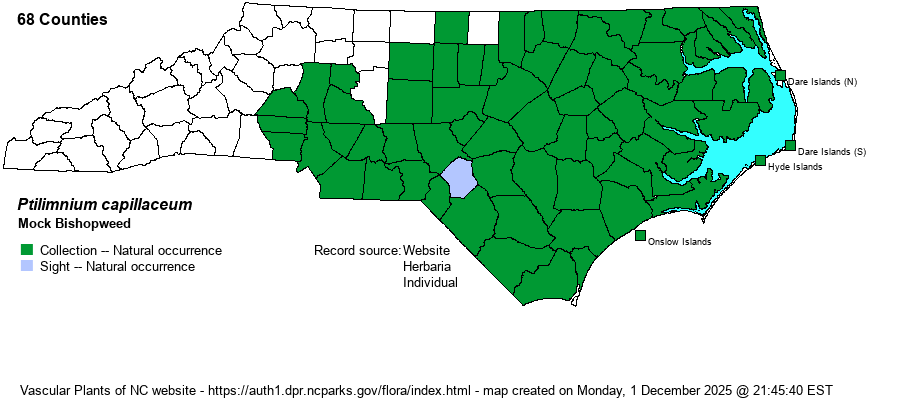| Author | (Michaux) Rafinesque | |
| Distribution | Throughout the Coastal Plain and the eastern 60-65% of the Piedmont. A Mountain record for "High Rock" in Swain County is in error, as the collector did not name a county and there is a "High Rock" also in Davidson, Madison, Rockingham, Rowan, and Transylvania counties.
This is a Southeastern species ranging from MA south to southern FL and west to central TX. | |
| Abundance | Common and widespread in the Coastal Plain; slightly more limited in habitat in the Piedmont, but still common in the eastern half, but essentially absent in the western portion. | |
| Habitat | This is a wetland species of open and typically sunny places. It occurs in marshes, ditches, openings in swamps and bottomlands, and similar wetlands. | |
| Phenology | Blooms from June to August, and fruits from July to September. | |
| Identification | This species is very similar to the extremely rare P. ahlesii. Both are erect species of medium height, to about 1-2 feet tall. Each has alternate leaves that are pinnately divided into a great number of extremely thin (filiform) leaf segments, 15 to 50 or more. In this species, the leaf segments are from 50 to more on average, as opposed to 15-30 segments in P. ahlesii. The linear segments in this species are somewhat narrower, under 0.5 mm wide, as opposed to the rather narrow but still only 0.5-1.9 mm wide in P. ahlesii. The numerous umbels of small white flowers in this species usually have 10 or more umbellets per umbel and usually 10 or more flowers per umbellet; as opposed to only 5-7 umbellets per umbel and only 5-7 flowers per umbellet in the rare species, meaning that the rare species is less floriferous, with smaller umbels and fewer flowers. Perhaps most importantly, this species flowers from June to August, and fruits from July to September (much later than in the rare species), which blooms from May to early June. Of course, P. capillaceum can and probably does occur in the same area as P. ahlesii, so when you are collecting or photographing these plants in the "Cape Fear Marshes" area, be extremely careful in the identification. As this species is so numerous in eastern NC, biologists searching for the rare species should have great experience with P. capillaceum first. Also, the quite rare P. costatum also grows in these same marshes near Wilmington, and thus biologists need to be aware to look for two rare species there! | |
| Taxonomic Comments | None, though P. ahlesii had been subsumed within it for many decades until described in 2004.
| |
| Other Common Name(s) | Eastern Bishopweed, Atlantic Bishopweed, Herb-william | |
| State Rank | S5 | |
| Global Rank | G5 | |
| State Status | | |
| US Status | | |
| USACE-agcp | OBL link |
| USACE-emp | OBL link |

